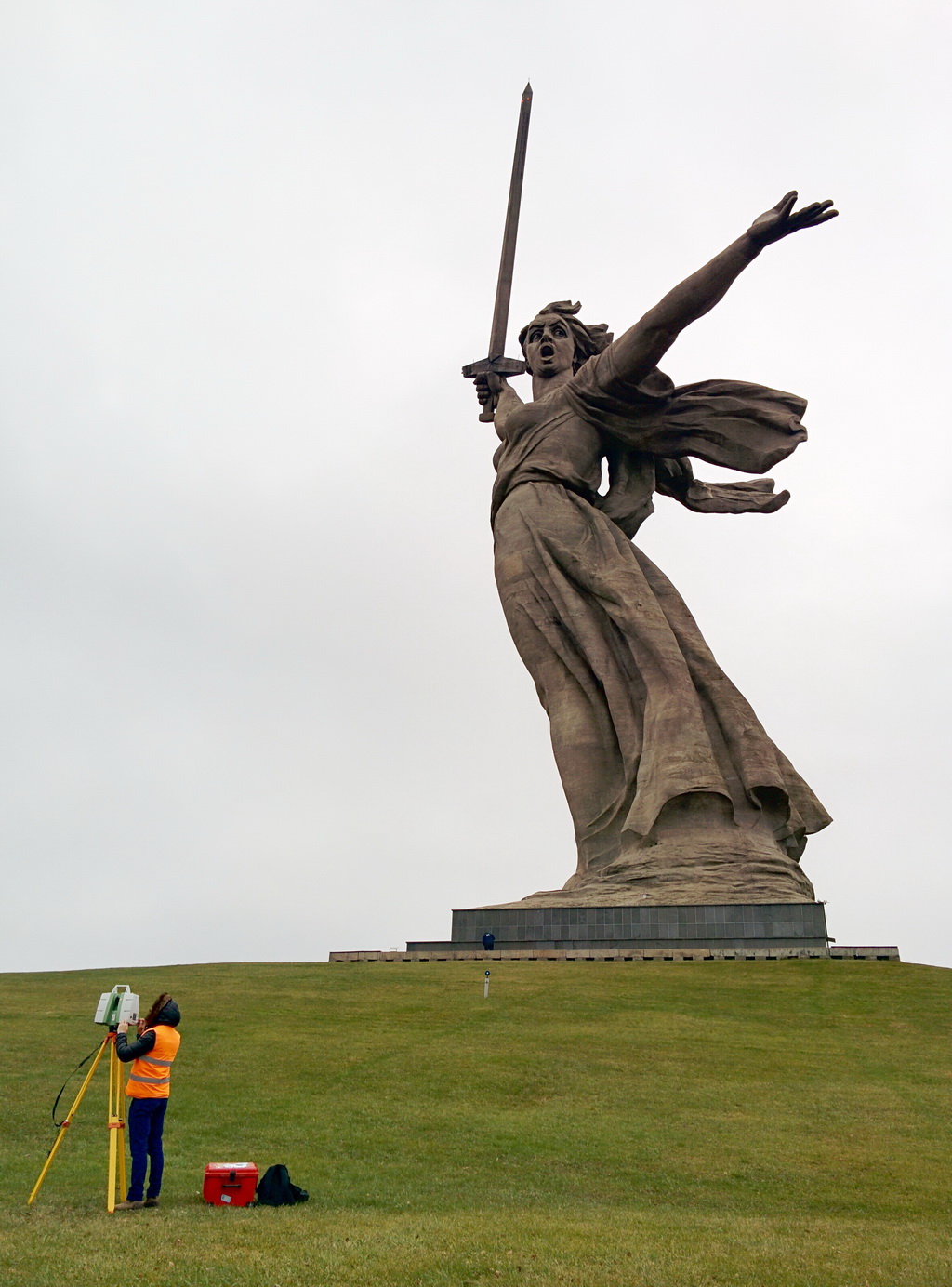 In December 2015, the company Trimetari Consulting LLC performed laser scanning of the world-famous sculpture The Motherland Calls on Mamayev Kurgan in Volgograd, Russia. The statue has a height of 85 m, at the time of its creation it was the highest sculpture in the world. To date, the work of sculptor Yevgeniy Vuchetich and engineer Nikolai Nikitin is the highest statue of Russia and Europe.
In December 2015, the company Trimetari Consulting LLC performed laser scanning of the world-famous sculpture The Motherland Calls on Mamayev Kurgan in Volgograd, Russia. The statue has a height of 85 m, at the time of its creation it was the highest sculpture in the world. To date, the work of sculptor Yevgeniy Vuchetich and engineer Nikolai Nikitin is the highest statue of Russia and Europe.
The monument built from 1959 to 1967 is the central part of the triptych, which also consists of the sculptures “Rear-Front” in Magnitogorsk and “Warrior-Liberator” in Berlin’s Treptower Park. It is understood that the sword, forged on the bank of the Urals, was later raised by Motherland in Stalingrad and dropped after the Victory in Berlin.
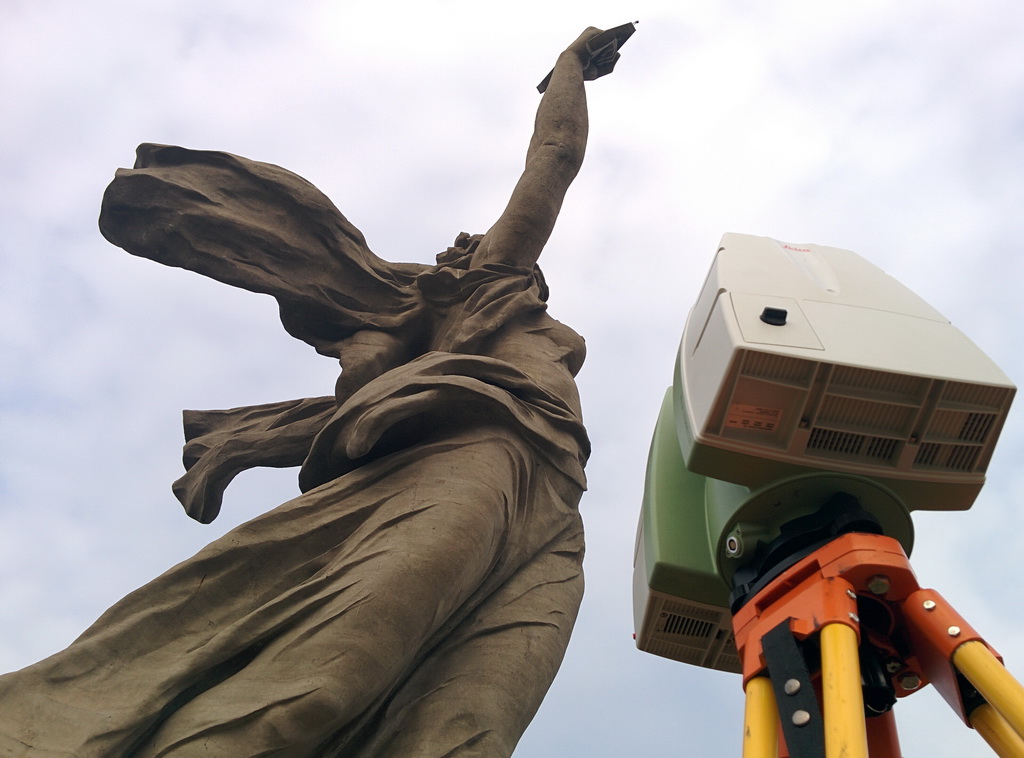 “Motherland” was the first monument in the USSR, completely made of prestressed concrete. The monument did not fixed at all: it stands on a 16 m deep foundation due to its own weight. The rigidity of the carcass of hollow sculpture is supported by more than 100 metallic wire ropes.
“Motherland” was the first monument in the USSR, completely made of prestressed concrete. The monument did not fixed at all: it stands on a 16 m deep foundation due to its own weight. The rigidity of the carcass of hollow sculpture is supported by more than 100 metallic wire ropes.
Motherland stands on the watered thickness of the so-called Maikop clays, which slowly but surely “slide” towards the Volga. In addition to this, on this slope since the pre-war times huge water tanks buried in the ground were located. One of them gave a noticeable leak directly to the base of the monument. The ground under the monument has been flooded so much that the water has reached the base, and there are violations in the state of the foundation.
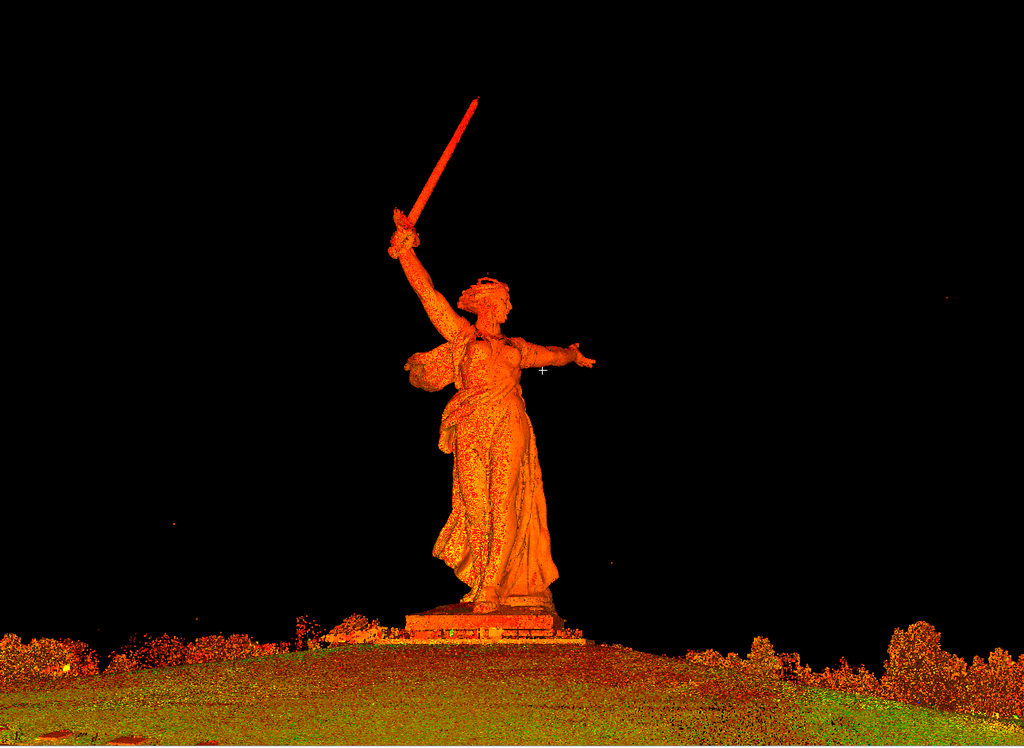 The calculated maximum value of the horizontal displacement of the monument is 260 millimeters. According to the former deputy director of the Memorial Complex on Mamayev Kurgan, Valentina Klyushina, according to the results of the work of the last commission, the roll reached 75% of the calculated-allowable – 221 millimeters. That is, the remaining value is only 38 millimeters.
The calculated maximum value of the horizontal displacement of the monument is 260 millimeters. According to the former deputy director of the Memorial Complex on Mamayev Kurgan, Valentina Klyushina, according to the results of the work of the last commission, the roll reached 75% of the calculated-allowable – 221 millimeters. That is, the remaining value is only 38 millimeters.
Deviations of the statue from a strictly vertical axis have been going on since 1966 – the time of construction and the very first survey. 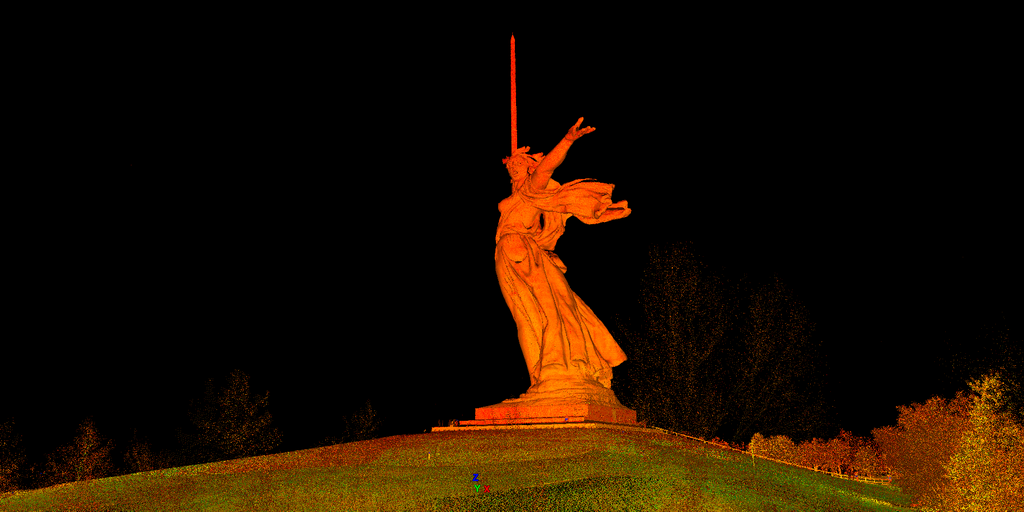 If from 1966 to 1970 the deviation was 102 millimeters, then from 1970 to 1986 it was 60 millimeters. By 1999, it added 33 millimeters, and in 2000-2008, another 16. – The increase in the bank is due to the fact that in the former protective zone of the monument, new objects are being actively erected: a huge shopping mall, gas stations, high-rise buildings have been built, which is strong has changed the geology of the surrounding area.
If from 1966 to 1970 the deviation was 102 millimeters, then from 1970 to 1986 it was 60 millimeters. By 1999, it added 33 millimeters, and in 2000-2008, another 16. – The increase in the bank is due to the fact that in the former protective zone of the monument, new objects are being actively erected: a huge shopping mall, gas stations, high-rise buildings have been built, which is strong has changed the geology of the surrounding area.
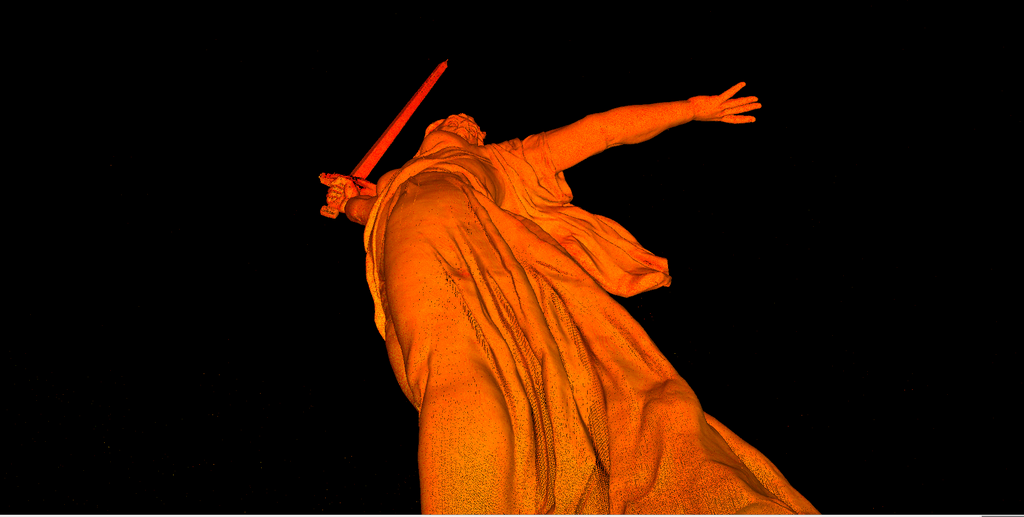 The laser scanning of the sculpture was carried out with Leica ScanStation C10 scanner. Work on the project consisted of two stages: field (laser scanning) and office processing (mutual equalization of scanning data, quality control). For an incomplete two days of field work, the sculpture itself and the mound on which it was installed were scanned. The final density was 2 cm between the points at the level of the head of the sculpture. The laser scanner Leica C10 allowed us to remove the monument quite smoothly, without any dips in the density, including the most uncomfortable zone – the right hand of the sculpture with the raised sword. Small reflection angles in conjunction with a low albedo are often a problem for scanners, but in this case the density in the area of the top of the sword, although it decreased, remained generally within the customer’s requirements.
The laser scanning of the sculpture was carried out with Leica ScanStation C10 scanner. Work on the project consisted of two stages: field (laser scanning) and office processing (mutual equalization of scanning data, quality control). For an incomplete two days of field work, the sculpture itself and the mound on which it was installed were scanned. The final density was 2 cm between the points at the level of the head of the sculpture. The laser scanner Leica C10 allowed us to remove the monument quite smoothly, without any dips in the density, including the most uncomfortable zone – the right hand of the sculpture with the raised sword. Small reflection angles in conjunction with a low albedo are often a problem for scanners, but in this case the density in the area of the top of the sword, although it decreased, remained generally within the customer’s requirements.
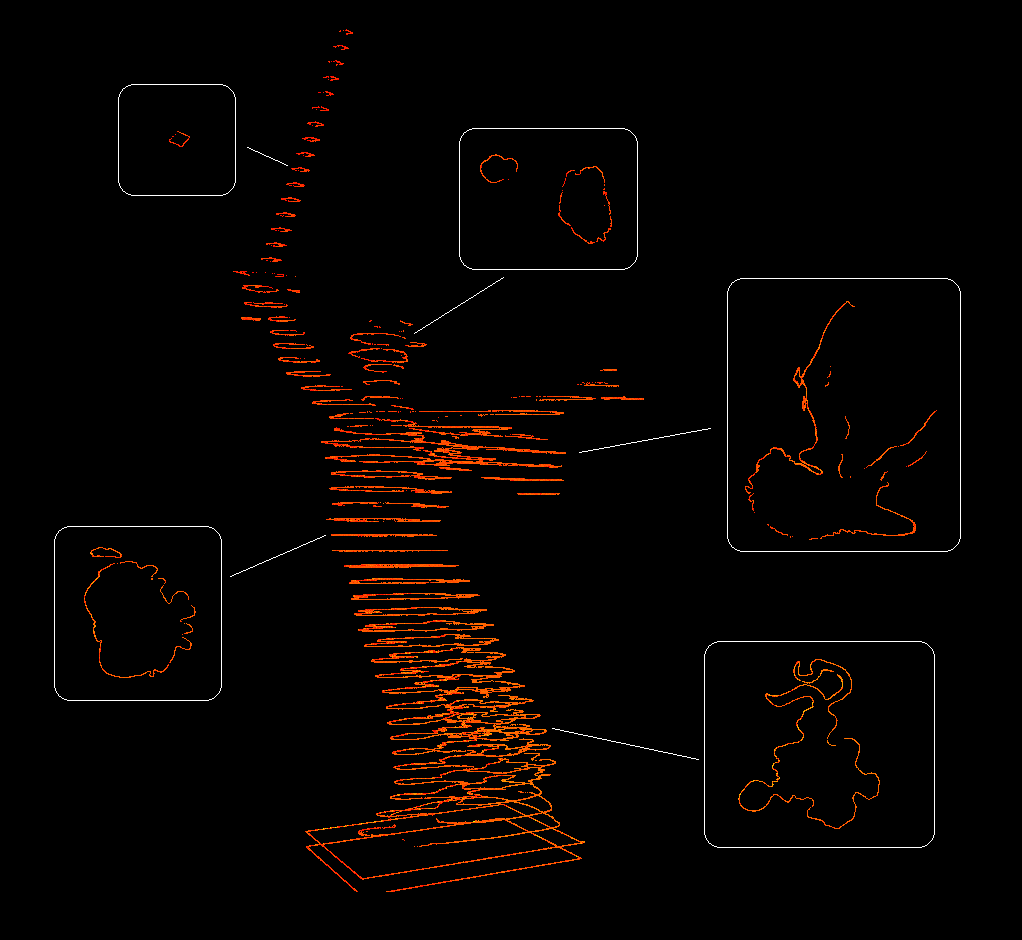 The result of measurement of the architectural monument – a pointcloud – on the one hand allows you to capture the current state of the structure, to perform virtual conservation, to preserve for the future generations the most detailed geometric description of the unique monument. On the other hand, the point cloud is a source data for geodetic monitoring of high-altitude structures, it allows measure movements not only in a few fixed points, but on the whole surface. And then use this description to visualize and analyze the displacements and deformation of the object.
The result of measurement of the architectural monument – a pointcloud – on the one hand allows you to capture the current state of the structure, to perform virtual conservation, to preserve for the future generations the most detailed geometric description of the unique monument. On the other hand, the point cloud is a source data for geodetic monitoring of high-altitude structures, it allows measure movements not only in a few fixed points, but on the whole surface. And then use this description to visualize and analyze the displacements and deformation of the object.
